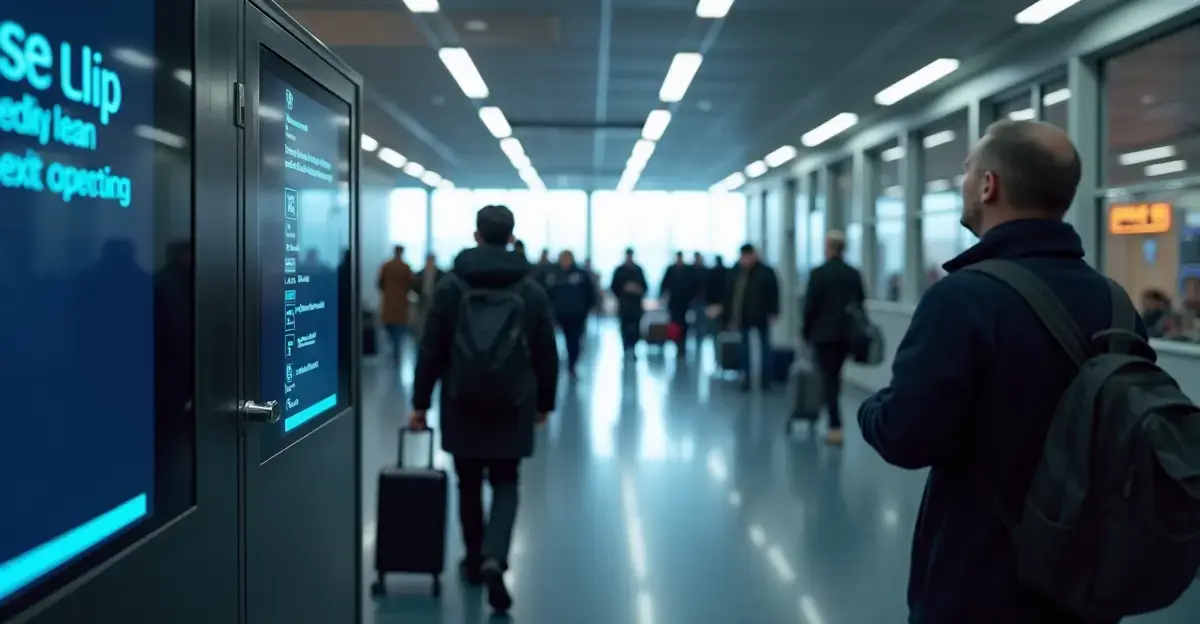EU's Entry/Exit System launches October 12, 2025, replacing passport stamps with biometric checks for non-EU travelers. Phased rollout until April 2026 aims to minimize delays while enhancing border security across Schengen area.

Europe's Digital Border Revolution Begins
The European Union's long-awaited Entry/Exit System (EES) officially launched on October 12, 2025, marking a fundamental shift in how border security is managed across the continent. After nearly a decade of planning and multiple delays, the system replaces traditional passport stamping with automated biometric registration for non-EU nationals traveling for short stays.
What Travelers Need to Know
Non-European travelers arriving in all EU countries except Cyprus and Ireland will now be required to provide their passport, fingerprints, and facial photographs at border checkpoints. This includes arrivals in Iceland, Liechtenstein, Norway, and Switzerland. The collected information will be stored for three years in most cases, creating a digital record that authorities can use to track overstays and identify security risks.
'It will help the border guards verify that the person holding the passport is who he says he is and that his passport is real, not fraudulent,' said Assita Kanko, a European Conservatives and Reformists MEP who served as the European Parliament's rapporteur for the EES.
Phased Implementation Across Europe
The new system is being introduced gradually over a six-month period until April 10, 2026. Major European countries like France and Germany are taking a cautious approach, implementing only a handful of checks initially to avoid massive queues at airports and border crossings. Meanwhile, smaller nations including Estonia and Luxembourg have opted for full implementation from day one.
Croatia has adopted a particularly measured approach, collecting biometric data for just four hours daily in October, expanding to eight hours in November, and reaching twelve hours by December. Slovenia is gradually introducing the EES at key border points including international airports in Ljubljana-Brnik, Maribor-Slivnica, and Portorož, as well as maritime crossings in Koper and Piran.
Potential Delays and Infrastructure Challenges
There are widespread concerns that the new data collection requirements could lead to significant delays at airports, train stations, and ferry terminals. However, authorities have planned the rollout during a traditionally low travel season to minimize disruption.
'As always, when important new IT systems are introduced, there can be some hiccups. But that is why the system will start in a low season for international travel. Furthermore, the gradual rollout was agreed precisely to avoid major issues,' Kanko explained.
The French Home Office expressed optimism about the initial implementation, stating they expect 'the situation to be normal, with no congestion problems' on launch day. However, they acknowledged that full implementation remains a 'major challenge' for France, which welcomed 100 million foreign visitors in 2024.
British Travelers Among Most Affected
British travelers are expected to be significantly impacted given the strong transport links between the UK and EU. Channel Tunnel operator Getlink has invested heavily in preparation, spending 80 million euros on new systems installed in both the UK and France.
'Everything is ready, everything is prepared and everything has been tested already with hundreds of customers,' said Yann Leriche, chief executive of Getlink, in an interview with Reuters.
Security Benefits and Future Developments
The EES represents a major step forward in European border security, helping to prevent irregular migration and enhance protection for everyone living in or traveling to Europe. According to the European Council, the system will enable authorities to identify visa misuse and track whether individuals who have been denied asylum have left the Schengen area.
The full implementation of EES is a prerequisite for the introduction of the European Travel Information and Authorisation System (ETIAS), which is expected to launch in late 2026. ETIAS will function similarly to the American ESTA system, requiring third-country nationals to complete an online form and pay a 20-euro fee before traveling to the EU.
As European borders enter this new digital era, travelers are advised to allow extra time for border processing and familiarize themselves with the new requirements to ensure smooth journeys across the continent.

 Nederlands
Nederlands
 English
English
 Deutsch
Deutsch
 Français
Français
 Español
Español
 Português
Português









